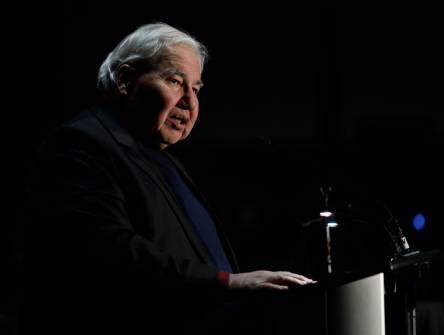Deciding what is reasonable self-defence
The top court will hear the case of Peter Khill, acquitted of second-degree murder in the death of an Indigenous man. But will the issue of jury selection come up?
.jpg?ext=.jpg)
The Supreme Court of Canada will get its chance, at last, to weigh in on self-defence provisions in the Criminal Code enacted seven years ago.
That should be welcome after Crown prosecutors announced in 2018 that they would not be seeking to appeal the acquittal of Gerald Stanley, the man charged with second-degree murder for the killing of Colten Boushie.
Stanley shot Boushie during a stand-off on his rural Saskatchewan farm. Boushie, a 22-year-old Indigenous man, had been trespassing on Stanley's property, and according to testimony, looking for equipment to repair a flat tire. Stanley said his gun went off as he reached to grab the keys from Boushie's SUV.
The trial, decided by an all-white jury, became a lightning rod in Canada for anger among those pointing to it as evidence of systemic racism against Indigenous people. The verdict even prompted the federal government to abolish peremptory jury challenges, the practice of dismissing prospective jurors without explanation.
At trial, Stanley's lawyers argued that the shooting was accidental due to a faulty firearm. Even still, the killing and the acquittal, especially in the context of numerous killings of unarmed racialized people in the United States, prompted renewed discussion on the law of self-defence.
There has been a lingering fear that a 'stand your ground'-type law or precedent could come to Canada.
Part of the concern centers around the Citizen's Arrest and Self-defence Act, which became law in 2013. The law explicitly makes legal the use of force, provided it is no more than necessary, to defend one's home or property.
Whatever that means is another question. Had Stanley's lawyers not homed in on the accidental misfire, could they have argued that his scuffle with Boushie involving deadly force was necessary under the circumstances? Chris Murphy, the Boushies' family lawyer, says the accidental misfire was based on misleading testimony and may not have survived on appeal.
"The Saskatchewan Ministry of Justice should have appealed Gerald Stanley's acquittal," Murphy told CBA National. They should have sought justice for Boushie, he says.
But the Supreme Court will get its chance to hear an eerily-similar case, having granted leave in R. v. Khill.
In 2016, just months after Boushie's killing, Peter Khill grabbed his shotgun and went outside to investigate noises coming from his driveway. Outside, he saw Jonathan Styres, an Indigenous man from Six Nations, leaning out of the passenger side of his truck. Styres ignored Khill's instructions to put his hands up. Khill testified that "if I didn't shoot, I felt I was going to be shot."
Khill fired two blasts from his shotgun, hitting Styres in the torso, killing him. Styres was not, in fact, armed.
At trial, the jury acquitted Khill. On appeal, the Crown successfully argued that the judge had failed to instruct the jury on the requirement that the use of force be reasonable, per the 2013 law. The appeals court ordered a new trial, a ruling that Khill's legal team is appealing.
"Left to stand, this decision fundamentally changes the law of self-defence in Canada. It improperly dilutes legal justification to a shell of its former self," wrote Michael Lacy and Jeffrey Manishen, Khill's lawyers in their request for leave from the Supreme Court.
Hopefully, the top court will bring some clarity to the Code's self-defence provisions.
Chris Sewrattan, a criminal lawyer practising in Toronto, says the law needs to allow for people to defend themselves, even using deadly force if they are legitimately fearful of attack. "I think that is what the government tried to do when they changed the self-defence law in 2013," he told CBA National. "What the law gained in breadth, though, it gave up in simplicity. You can't have both."
Further muddying our understanding is what, exactly, constitutes reasonableness. The Crown argued that it was unreasonable for Khill to take his shotgun and leave his house to confront a man he believed was burglarizing his truck. Khill's team characterized that "cowering and calling for help."
It's unclear just what degree of force would be considered reasonable when defending one's property. Khill himself confronted Styres, but testified that he legitimately feared the latter was reaching for a weapon.
The Court of Appeal recognized that the 2013 provisions gave a huge degree of latitude for a jury to decide what is, and isn't, reasonable. That's where the crux of the matter is.
"The jury represents the community," Murphy notes. "And if the 'community' believes that an accused's actions were reasonable, the community will acquit the accused. If the community believes the accused actions are not reasonable (and excessive), the community will convict."
Where the Supreme Court could also bring significant reform is in how juries themselves are selected. "I believe that the Supreme Court of Canada should mandate that in every single case where there is either a racialized accused or racialized victim, a 'challenge for cause' be brought by either the Crown or the Defence," says Murphy. "In such cases, each and every potential juror must be asked if he or she is able to judge the case without bias, prejudice or partiality on the basis of the accused's or complainant's race."
A jury composed of individuals who hold racist attitudes, Murphy says, cannot deliver justice for racialized people.
It’s worth noting that just this week, Debbie Baptiste — Boushie's mother — was granted leave to intervene in R. v. Chouhan before the Supreme Court. In that case, lawyers for the accused are challenging the ban on peremptory challenges, although they have been largely unsuccessful at the lower courts. The court will consider the constitutionality of ending the challenges.
Before leave was granted in that case, Sewrattan said that the court also needed to look closely at how to improve deliberations in self-defence cases such as Khill.
"The Supreme Court could ask that juries consider racial profiling when deciding whether the self-defence was reasonable," Sewrattan says. "The Supreme Court has already removed self-defence from a person who perceives a threat based on a racist belief. The Supreme Court could take one step further, asking that the jury consider whether a defendant who reasonably perceived a threat acted against it for a racist purpose."
Ultimately, it will be up to Crown prosecutors to get at the heart of the case — something the Supreme Court can't do for them. "The most significant way to ensure that racist killings are not successfully disguised as self-defence is to focus on the facts, not the law," Sewrattan says. "The prosecutor needs to vigorously cross-examine the defendant to expose the racist motivation behind their conduct."
While the written arguments have yet to be filed, the Attorney General's application for leave makes no mention of the jury selection process, systemic racism, or the victim's Indigenous status. It may be up to the intervenors to raise those issues.


